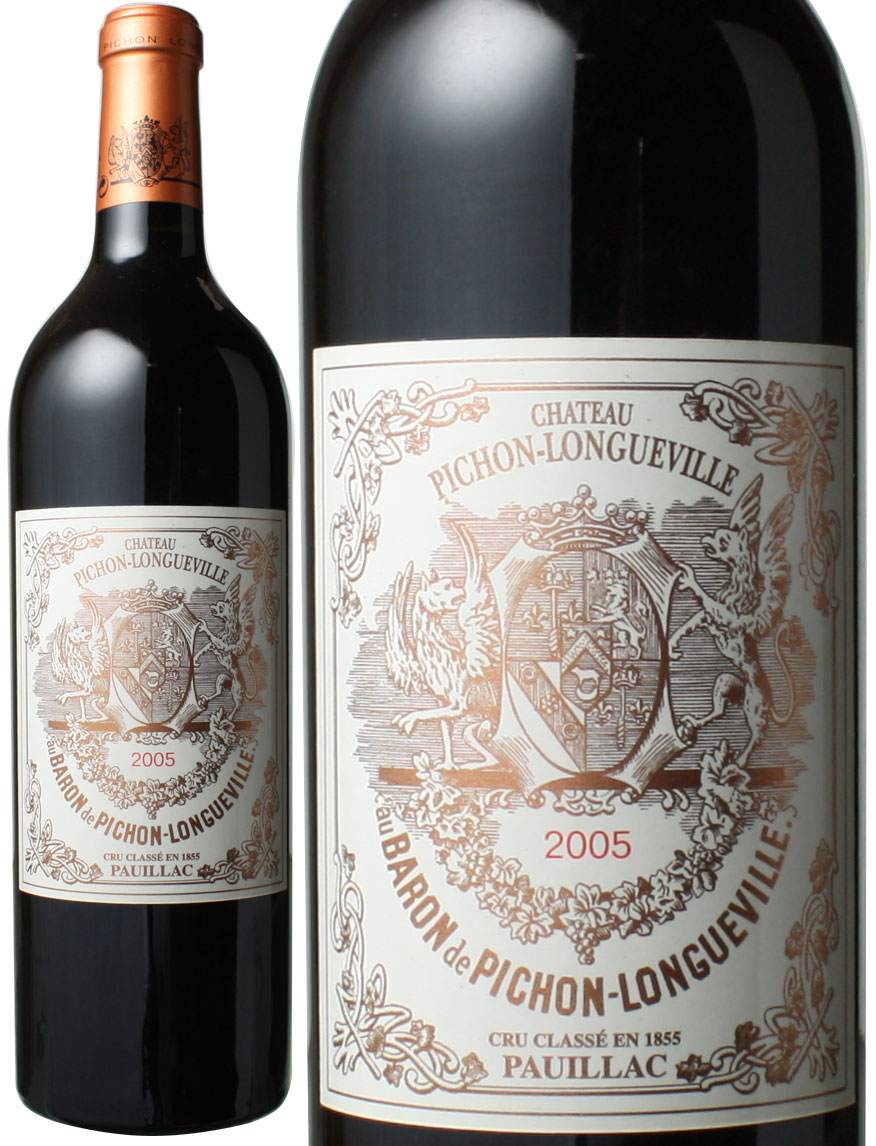
Drink it now as well as over the next 15 or so years. Nevertheless, it is medium-bodied, elegant, and pure, and a classic example for this château. "The 2005 Pichon Lalande, with its aromatics of cassis, forest floor and earth are followed by a medium-bodied wine that doesn’t have quite the length and richness the aromatics suggest. Because of the consistent critical acclaim, this estate would be up for a promotion to a First Growth should a reclassification ever be in the cards. Their textures are astonishingly silky, and they offer exquisite notes of truffle, dark berry, cassis and cedar. They are softer than other Pauillacs but generally require at least 10 to 12 years of bottle ageing to show their sublime secondary characteristics. With both holdings in Pauillac and Saint-Julien, these 100% organically farmed wines require a bit of time to unfold. Though less of the grand vin is being made now, the quality continues to improve.

This allowed the winemaking team to create softer, more supple wines at the Pauillac estate. The estate was renovated and modernized, with a targeted replanting program and a triple tiered gravity-controlled cellar that cost upward of 15 million Euro. Roderer understood the importance of the feminine influence at Comtesse de Lalande and hired Sylvie Cazes to oversee the property. Eventually, May-Eliane de Lencquesaing sold the estate to Champagne Roderer in 2007. Under her management, quality of the wines skyrocketed, and they earned international recognition and critical acclaim. In addition to increasing the size of the property from its original 40 hectares to 89 hectares, she traveled the globe and was a fierce champion of the Bordeaux region. She was nicknamed, “Le Générale,” partially because of her husband’s military background and partially because she was a force to be reckoned with. In 1978, May-Eliane de Lencquesaing became the new owner and manager of Château Pichon Comtesse de Lalande. The female legacy was honored, and the estate remained in the hands of the same family for over 250 years. Instead of passing down the estate to male heirs, the estate was passed from aunts to nieces. She made many contributions including commissioning the popular architect Duphot to build a residence inspired by the Hotel de Lalande located in Bordeaux. After a few years, Virgine, the wife of the Count de Lalande, took over management of the estate. They were considered sensual and feminine. Though it stood adjacent to the First Growth Château Latour, the wines from Comtesse de Lalande carved out a distinct taste profile from the traditional Pauillac style. In the 18th Century, the property was run entirely by three women: Therese de Rauzan, Germaine de Laujus and Marie Branda de Terrefort. The origins of the property date back to 1850 when Baron Joseph Pichon Longueville divided his large estate in two upon his death his male heirs received Château Pichon Longueville au Baron and his daughters received Château Pichon Longueville Comtesse de Lalande. Because of this, the stunningly voluptuous wines of Château Comtesse de Lalande are drinkable proof that girls do indeed rule. The success of this illustrious Super Second is due to the contributions of powerful women who championed it throughout the ages.

Many châteaux in Bordeaux are passed down from father to son and run by men, and one often hears winemakers rhapsodize poetically about the union between, “man and vine.” Because of this, the story of Château Pichon Longueville Comtesse de Lalande is a unique and important one.


 0 kommentar(er)
0 kommentar(er)
